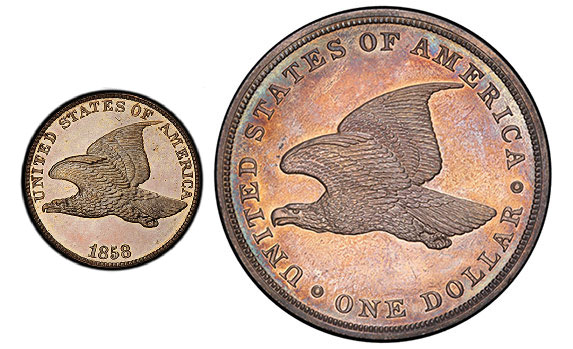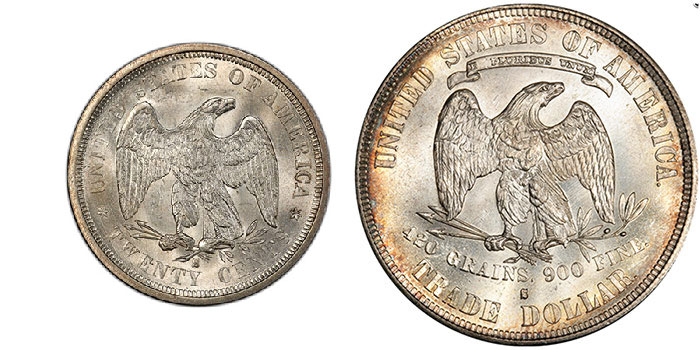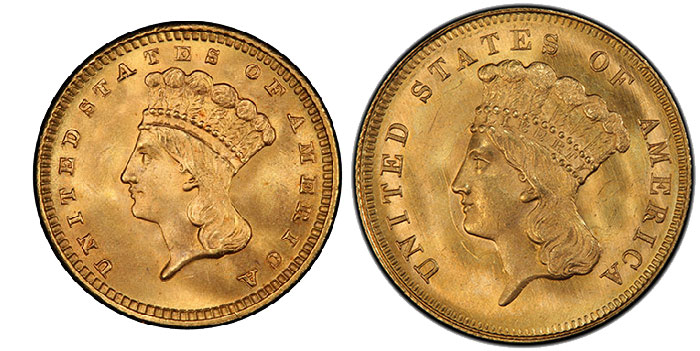By Mike Sherman for PCGS ……
From its beginnings in 1793 through the end of the 19th century, most U.S. coins have shared a common design theme.
The Draped Bust design introduced on the silver dollar in 1795 ended up being employed on the half cent, the cent, the half dime, the dime, the quarter, and the half dollar through 1807-08. The Capped Bust design was uniform across our silver coinage for nearly 30 years in the early 19th century. Of course, the Liberty Seated design dominated the mid- and late 19th century, and the Barber series took us up to World War I.
It wasn’t really until 1916 that our main silver denominations took on individual personalities all their own.
Much of our gold coinage also shared a common design theme through the early 20th century. From the Draped Bust Right design of the late 18th century through the familiar “Libs” that took us from roughly 1839 to 1907-08, higher denominations were simply larger versions of their smaller cousins.
However, if you look closely, you’ll notice there are a few design elements that appeared on more than one U.S. coin – but were not intended as a larger denomination version.
Our first small cent, the Flying Eagle design, “borrowed” its eagle from the reverse of the Gobrecht dollar, made from 1836-39. Aside from a slight lengthening of the head and neck of the eagle, they are identical.

The Flying Eagle on the cent had its origin some 20 years earlier on the reverse of the Gobrecht dollar.
Another example of recycling can be found on the reverse of the short-lived twenty-cent piece of 1875, which used a very similar eagle to the one found on the reverse of the Trade dollar of two years earlier.

Seems to me these two eagles are pretty darn close. Fraternal twins maybe?
The poor $1 gold piece went through two redesigns in seven years. The first design (Type One 1849-1854) was too small, while the second design (Type Two 1854-1856) had serious striking issues. When the third type was issued in 1856, they borrowed Liberty’s head from the Three Dollar Gold piece, from two years earlier.

The $1 gold piece (left) finally got its winning design from the $3 gold piece (right).
Take a spin through the Red Book sometimes, and see if you can find any others!
* * *





